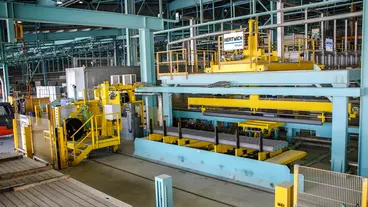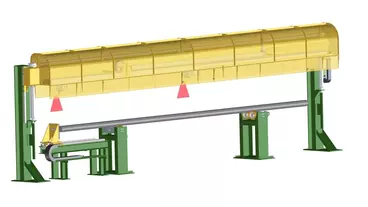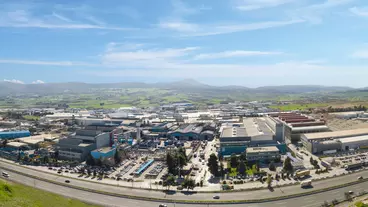Hertwich to supply sawing line for billets to the US
US producer Century Aluminum has placed an order with Hertwich Engineering for a fully automatic sawing line for aluminium billets.

The line, which also includes systems for stacking and packing the billets, is intended for Century’s site in Sebree, Kentucky, where another Hertwich saw has been in use since the year 2000.
Century Aluminum is the largest manufacturer of primary aluminium products in the United States. The aluminium smelter in Sebree has a production capacity of around 220,000 tpy per year. This is more than a quarter of the company’s total output. “One saw from Hertwich has been proving its worth at the US facility for over 20 years. Now another latest-generation line from Hertwich is being added. Trust must be earned, and that’s something we achieved exceptionally well here,” says Gerold Keune, chief executive of Hertwich Engineering.
New sawing line more energy-efficient and productive…
The investment in the second sawing line from Hertwich aims to further enhance the Kentucky facility’s operational efficiency. It is scheduled to go into service in 2024 and will replace an older line. The new saw not only boasts higher productivity, it also requires less manpower. Its energy yield is also outstanding: the efficiency of the saw’s state-of-the-art electric motors meets the premium requirements of current US regulations.
… and can process billets with a diameter of between 7 and 12 inches
The line can process aluminium billets with a diameter of between 7 and 12 inches. It has an hourly capacity of up to 225 short billets with a maximum length of 1.60 m, or 60 long billets with a maximum length of 6.10 m. After sawing, the aluminium billets can be weighed – ready for calibration – and stacked side by side and on top of each other using so-called transfer cars.
The billets are then tied with PET straps and placed on supporting timber blocks so that they can be picked up and loaded by forklift truck. The billets, which are sawn to length, are further processed in press shops into profiles for the automotive or aerospace industries.

Hertwich Engineering unveils a fully automated 3D inspection system for elevating the quality control of billet production.

Nebojsa Wosel is the new CEO of mechanical engineering company Elumatec from 1 April. He succeeds Paolo F. Bianchi.

Elval has placed an order with SMS Group for the delivery of its Viridis Energy & Sustainability Suite for its aluminium rolling mill in Oinofyta, Greece.
